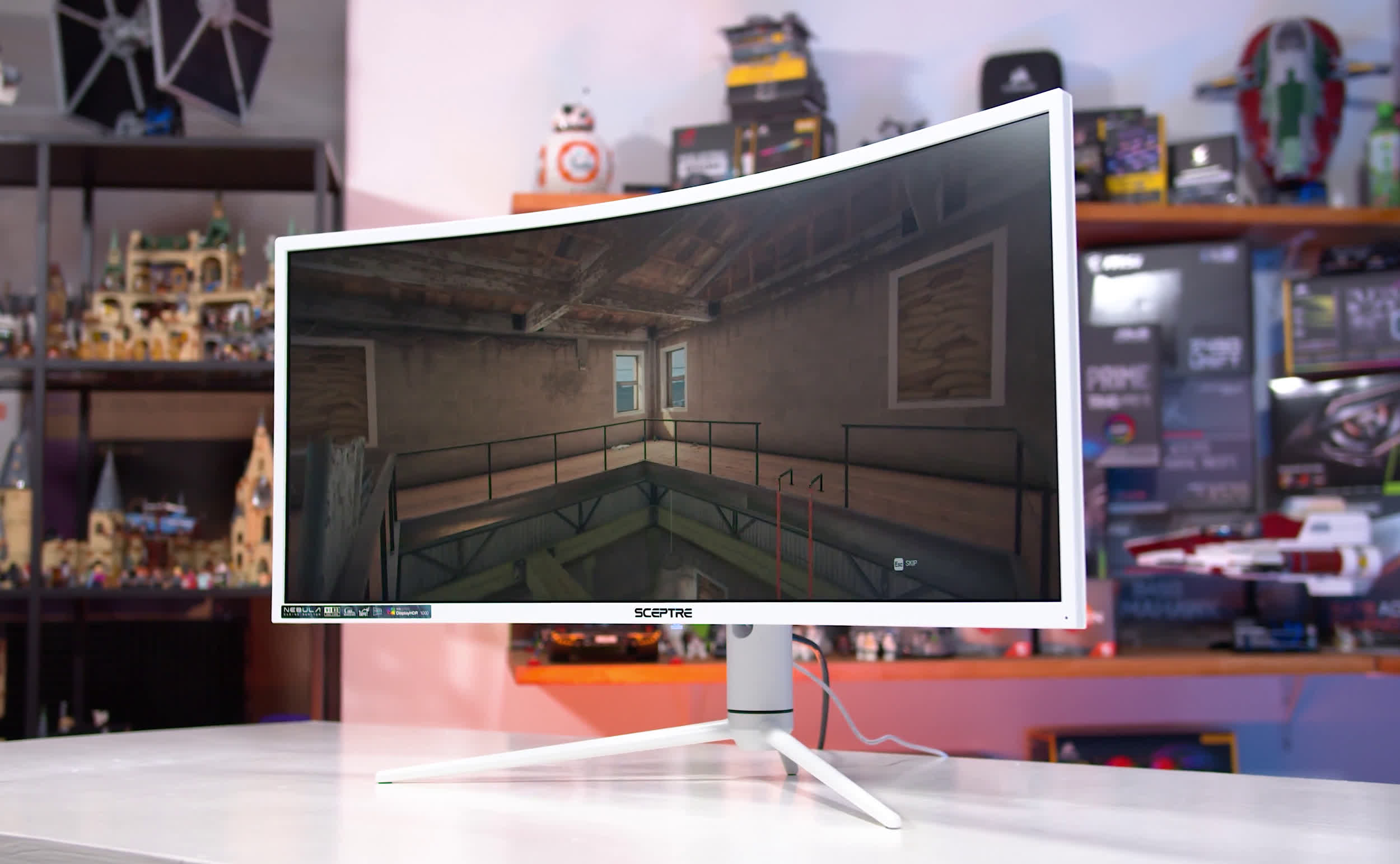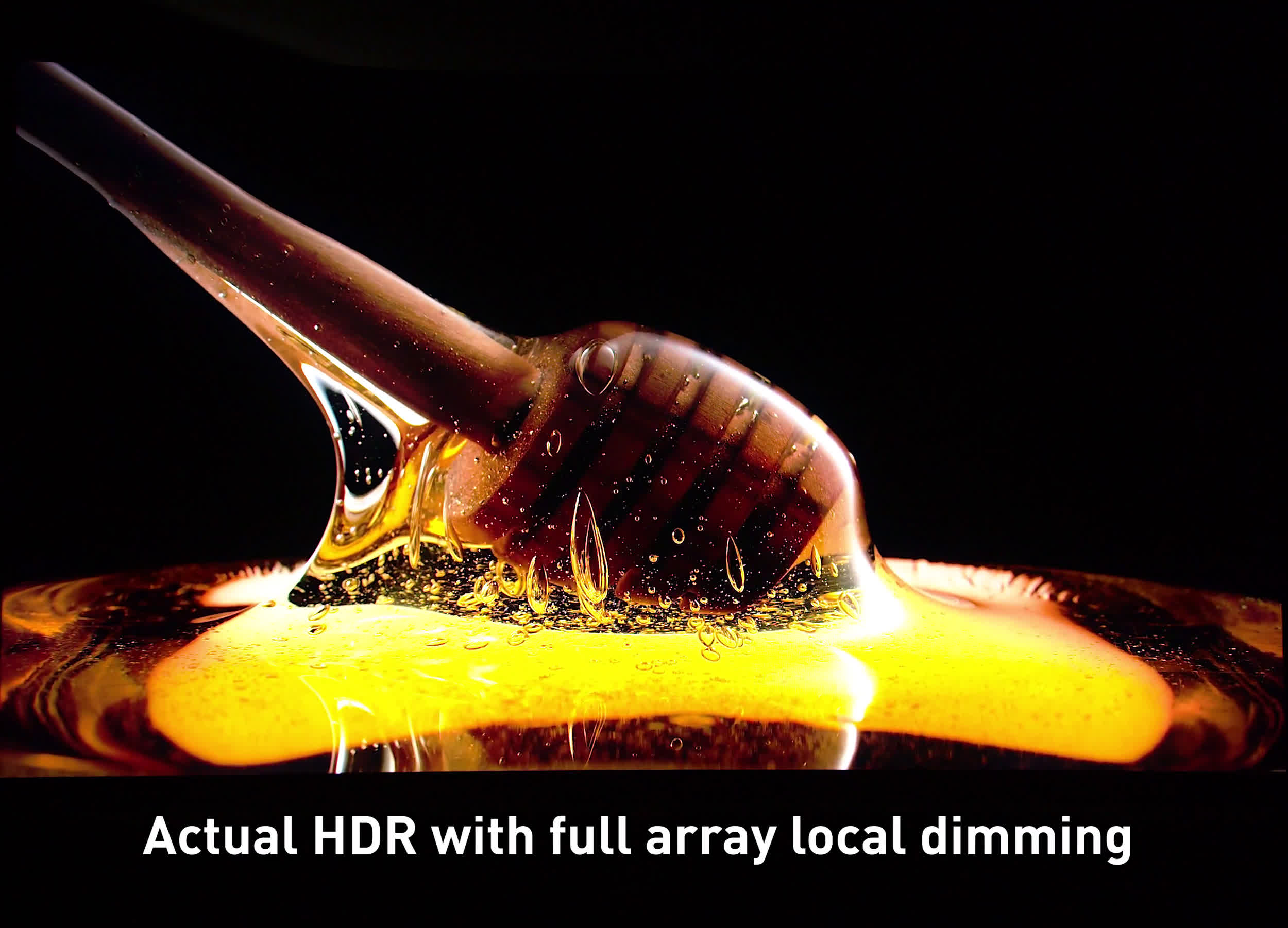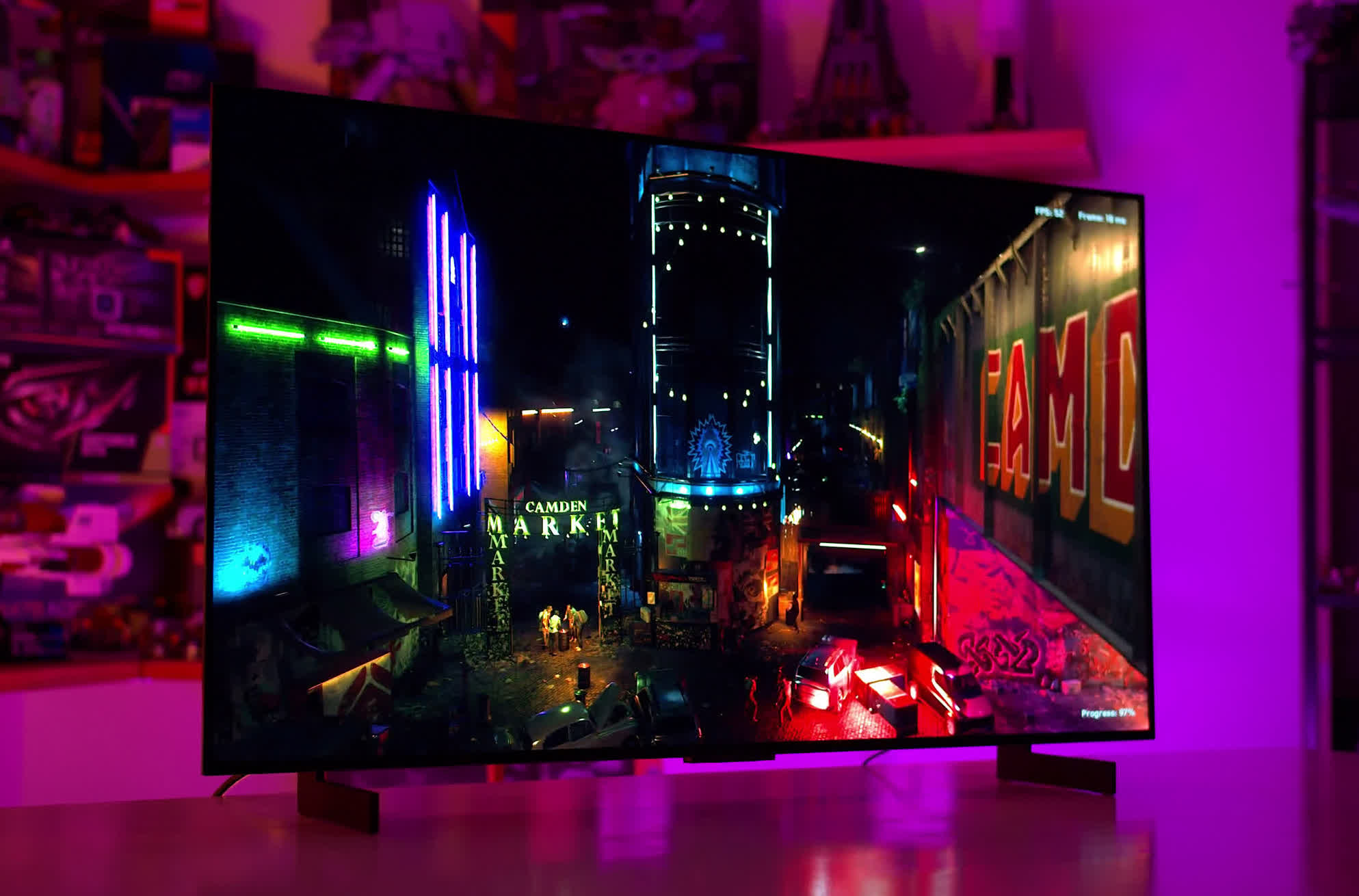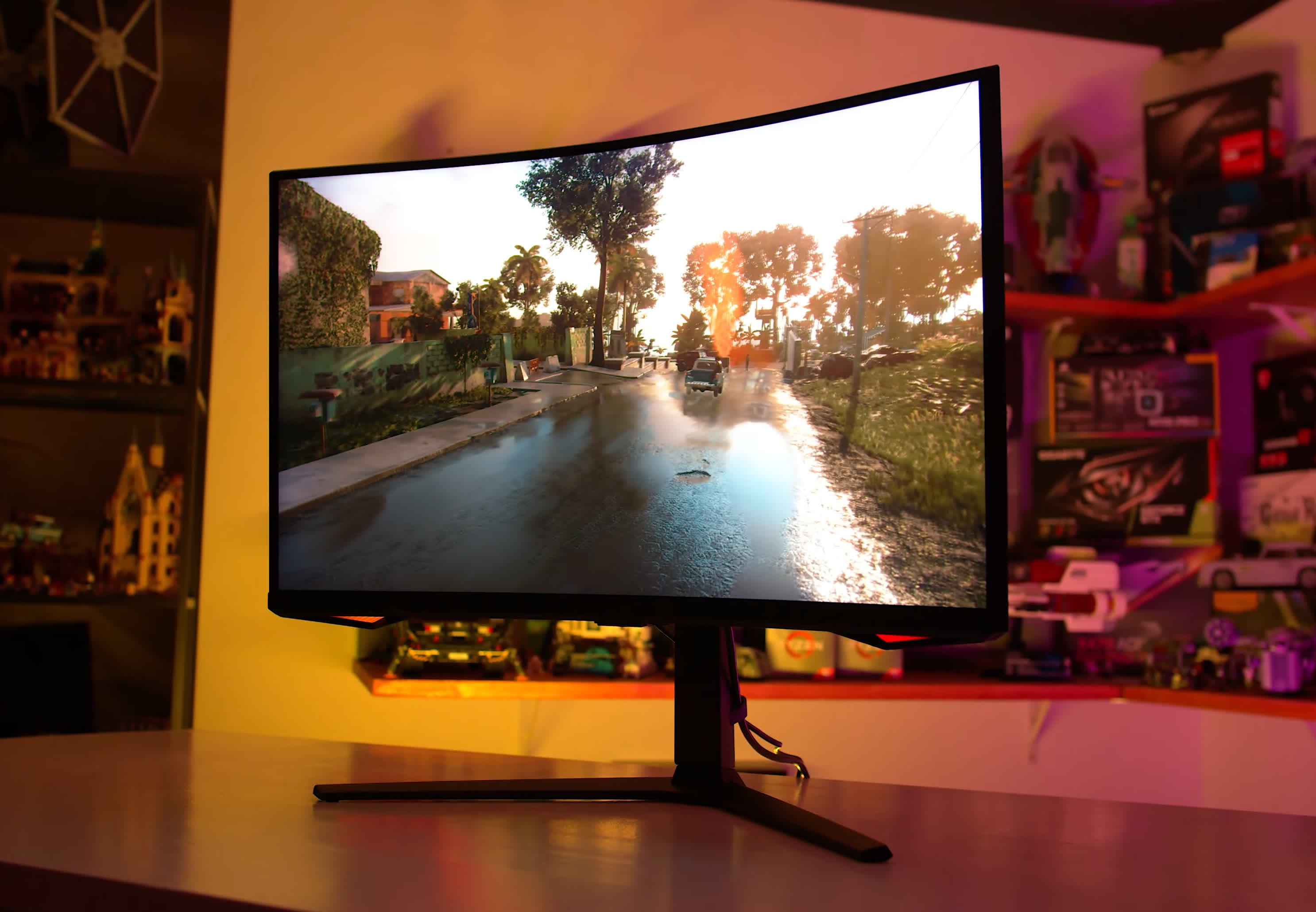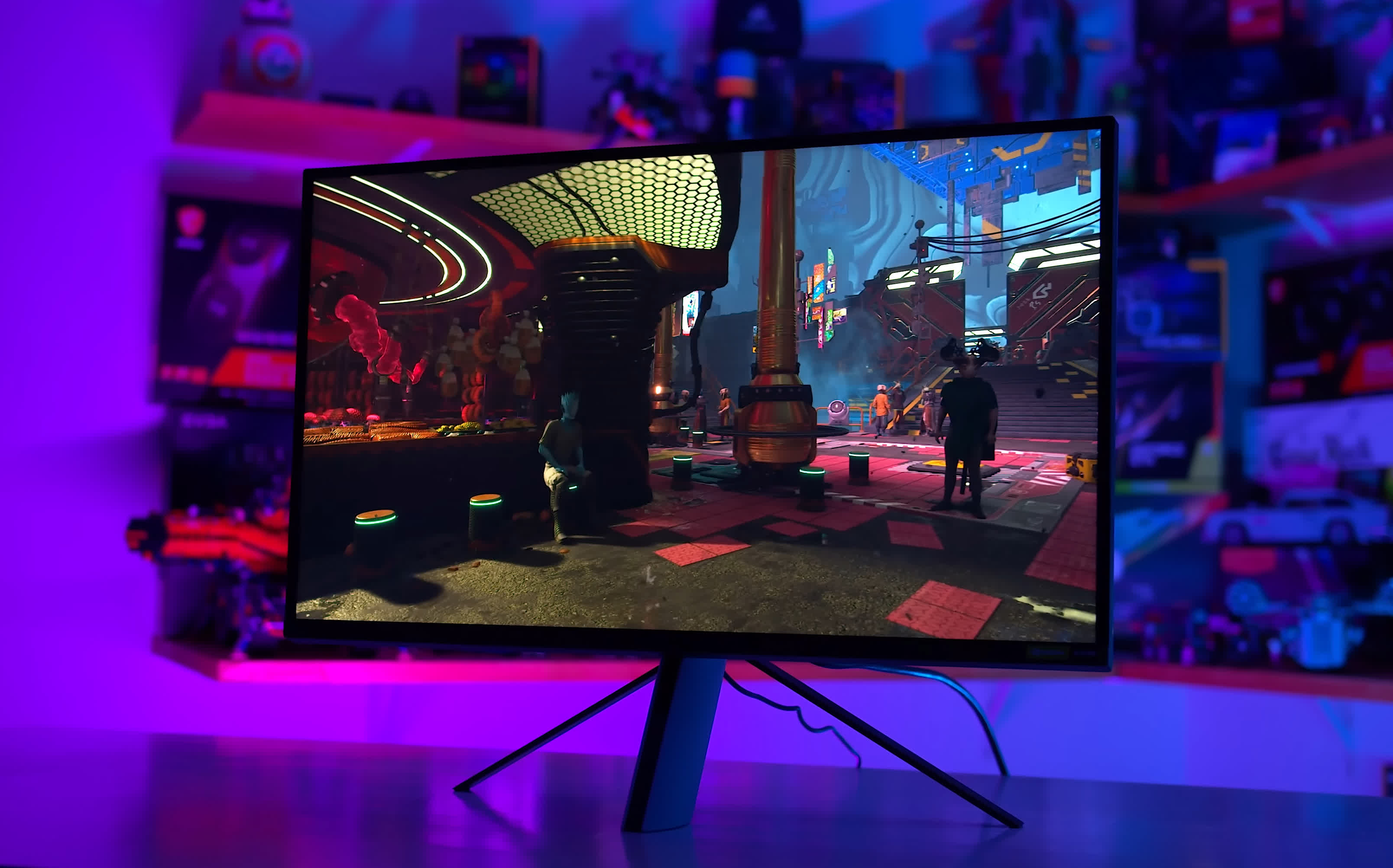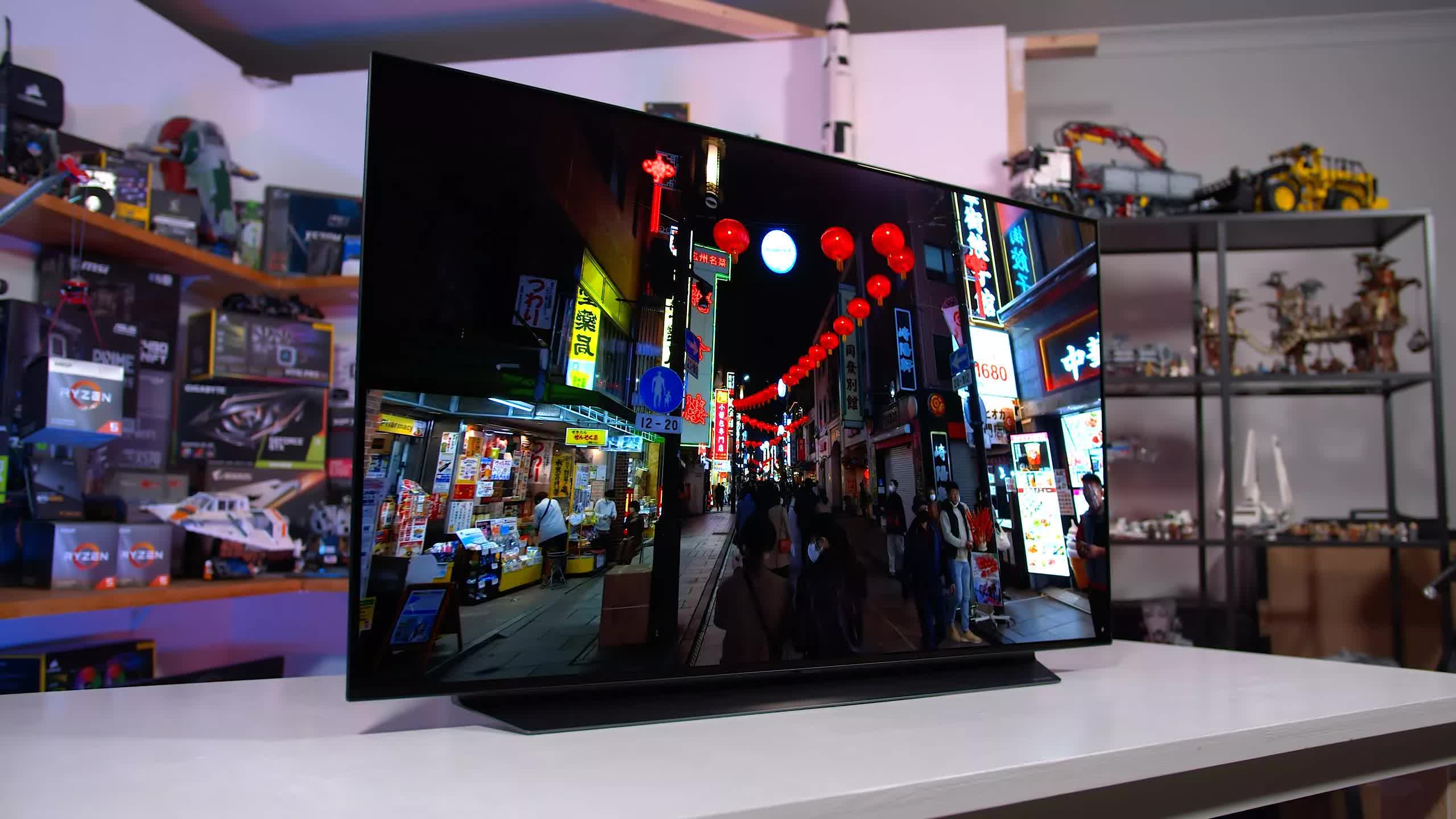See our latest update to this buying guide: The Best Gaming Monitors
Until now, it hasn't made sense to write a guide about the best HDR monitors for gaming as there have been only one or two HDR monitors worth considering at best, but it feels like we're finally starting to see some momentum in the HDR market this year with some good contenders.
As with all previous buying guides, we tend to only discuss and recommend monitors we've personally tested and know to be good, or monitors that are very similar to products we have tested. It's always worth going back and checking out the dedicated monitor reviews for more in-depth information on each product.
But before we go into recommendations, let's kick this off with a warning about the multitude of HDR monitors that you should avoid.
Warning: Avoid Most HDR Monitors
One of the most annoying aspects to the HDR ecosystem, especially for monitors, is the amount of products that claim to be "HDR capable" yet don't have the hardware to support HDR properly. We think it's really important to arm you all with the knowledge on how to identify a fake HDR product and why these products are bad and not worth spending money on.
For HDR to provide a genuine image quality improvement over SDR, the hardware needs to be capable of displaying the majority of the HDR signal's huge range - it's a high dynamic range image after all. This means it needs to support a high level of brightness: HDR images are brighter than SDR, often reaching over 1000 nits. It needs to support very high contrast, so that high brightness elements can be displayed alongside deep, rich shadow detail on screen simultaneously. This is crucial, as it gives HDR imagery most of its richness and pop. It needs to support a wide color gamut, allowing for a greater range of colors to be displayed. And it needs to follow HDR encoding systems, like the use of the PQ gamma curve and minimum 10-bit processing.
True HDR monitors will target all four areas and deliver a significant improvement over SDR displays.
But often we see fake HDR monitors, which try and fool buyers into thinking they're getting an HDR experience, when only a few (or sometimes none) of the key areas are accounted for. Monitor manufacturers are so lazy and deceptive that sometimes HDR support only extends as far as supporting HDR10 signal inputs and an adjustment to gamma, without any of the extended brightness, contrast, or color gamut that is required to show that signal properly.
This has been exacerbated by standards bodies that are doing a bad job of highlighting to consumers which monitors actually support good quality HDR. One of these standards is DisplayHDR, which is so poorly designed that monitors we would class as "fake HDR" can easily be certified in the lowest, DisplayHDR 400 tier. This only serves to benefit display makers who can market their products as "HDR certified," with the backing of a third party, but not consumers who want to find the best HDR products.
How can you tell if a monitor is fake HDR or not?
Our advice is simple: based on what is currently available, you should assume that an HDR monitor is fake, trash tier HDR unless proven otherwise. The vast majority of displays advertising HDR support these days, we would say in excess of 90%, are awful HDR products that you absolutely should not buy for their HDR capabilities.
The DisplayHDR certification system is not trustworthy enough to give you real insights into HDR performance, as we've seen products rated as high as DisplayHDR 1000 that we wouldn't class as true HDR.
You should especially ignore DisplayHDR 400 products. We don't think we've ever seen a good one for HDR content consumption, but ignoring DisplayHDR entirely is a good idea, too.
Beyond this, we'd strongly recommend watching reviews to learn whether a product is a real HDR monitor or not. But if there are no reviews, there are a few things to look out for.
Most OLED displays will be capable of true HDR performance, so OLED is usually a good sign. Also look out for full array local dimming LCDs, often advertised with mini-LED backlights – but make sure you check the zone count. If the zone count isn't advertised, you should be suspicious of that display's performance. If it is advertised, a number in excess of 500 zones is usually pretty good, with around 100 zones at the bare minimum. Also, look out for brightness specifications, you'll want to see peak brightness in the 600+ nit range.
Merely advertising "dimming" or "local dimming" isn't enough though. You'll want to specifically see terms like "full array" or a high zone count in the spec sheet. This is because some monitor makers like to include edge lit dimming, which can provide "local dimming," but usually with only a handful of massive zones. Edge lit dimming is not sufficient for a good or true HDR experience as it doesn't allow for acceptable levels of local contrast, and frankly looks bad compared to real HDR. We wouldn't want you to buy an edge lit dimmed HDR panel and be disappointed, so this is our warning.
Luckily, there are some true HDR products that we believe are worth buying, so let's get into it...
Masthead credit: Prometheus Design
Best Overall
Alienware AW3423DW 34" or LG C2 42" OLED

If you're after a high-end HDR monitor, it's hard to go past these two excellent OLED options for gaming. One is the Dell Alienware AW3423DW, and the other is LG's 42-inch C2 OLED TV, and while neither is a "traditional" format gaming display, they both offer outstanding performance in motion and for HDR content.
Our overall recommendation goes to the Alienware AW3423DW, an ultrawide 34-inch 3440x1440 display with a 175Hz refresh rate. The main reason why we think this is such a good buy is that it's the first OLED monitor we've seen that is specifically designed for desktop HDR gaming on PC. The LG C2 is awesome, too, and it definitely has is strengths, but the AW3423DW is better suited to normal desktop usage.
Using QD-OLED technology, the Alienware delivers true HDR performance thanks to OLED's self-lit pixel structure that result in deep, zero-level blacks. This panel can hit up to 1000 nits of brightness for small elements and simply looks great displaying HDR content. Combined with extremely fast response times, and fast 175Hz refresh rate, it delivers an elite combination of gaming and HDR performance.
It's a very capable SDR gaming monitor as well, and despite featuring OLED tech, it doesn't have some of the drawbacks we've seen from other OLED displays. In particular, full screen brightness of 240 nits is usable in most rooms (though not amazing), and there are no annoying features like automatic brightness limiters when using the SDR mode. Dell also mitigates the anxiety over OLED's tendency to burn-in with a 3 year burn-in warranty.
That's not to say the AW3423DW is perfect as there are some drawbacks to be aware of. It's not an ideal monitor for desktop app usage and productivity work due to its non-standard subpixel layout that causes fringing around hard edges and text, and the still present risk of permanent burn in. As such we only recommend this display if you are primarily going to use it for content consumption like gaming or watching videos. There's also the display coating, which is not great and has issues with ambient light reflection in brightly lit rooms.
At $1300 though, we think this is fairly priced, actually this is an excellent price for what Alienware is offering.
Our alternate choice, the LG C2, is also worth considering. It's a full blown TV with smart features and a much wider range of calibration options, including support for Dolby Vision, which the AW3423DW doesn't support.
It's larger, has a better display coating, better subpixel layout, and has better console compatibility thanks to HDMI 2.1 support.
It is a little bit more expensive at $1,300, but we think it's definitely worth considering if you want a larger but still usable desktop display, or if you aren't sold on the ultrawide format.
What is clear in 2022 is that OLED is in the lead for HDR gaming.
Best Regular-Format HDR
Samsung Odyssey Neo G7 32" Curved

Our top HDR choices at the moment are less typical display formats. The Alienware is an ultrawide and the LG C2 is quite a large display, certainly much larger than a typical gaming monitor. So which HDR display is the best choice if you want a more standard desktop monitor?
In our opinion the monitor to choose is the Samsung Odyssey Neo G7. It's a 32-inch 4K 165Hz gaming display using VA LCD technology and with a 1,196-zone full array local dimming backlight. Thanks to this backlight and the use of high-contrast VA tech, the Neo G7 offers a true HDR experience that we think gets the closest to OLED of any monitor we've tested so far. It doesn't quite match OLED for its richness, shadow detail and viewing angles, but there's no doubting the HDR experience here is impressive.
The Neo G7 is one of the fastest LCD monitors we've tested in terms of response times, and while motion clarity isn't as good as OLED, it still offers a strong gaming experience – especially at 4K. The HDR experience is very good, the combination of a high zone count backlight and great native contrast leads to minimal blooming in HDR content, while retaining the punch you should get from these displays. Peak brightness exceeds 1200 nits and overall this display is somewhat brighter than you'll get from an OLED, though not especially bright.
Being a more "traditional" gaming display, the Odyssey Neo G7 has a few other advantages up its sleeve. The use of a VA LCD means there's no risk of burn in, and it has a normal subpixel structure which plays nicely with desktop apps and text. And of course, the size is especially nice for desktop use, 32" with this sort of resolution is fantastic.
There are some drawbacks though, which is why we prefer the OLED options. The 1000R curvature is very aggressive and adds nothing to the experience, so while the display is better suited to desktop use, we don't think it's all that versatile as a productivity or creator monitor.
Motion performance is also worse than OLED, especially the Alienware's, and input latency with dimming enabled is unimpressive. Poor viewing angles also require you to view the display dead-on to get the best HDR experience.
At around $1,300 it's definitely worth considering for its HDR capabilities. Also, we would definitely get this monitor over the Odyssey Neo G8, which is a higher refresh rate model that nonetheless ships with deal breaking issues.
Best Below $1,000
Sony Inzone M9 27"

Are there any options we could recommend for those that want to spend less? In our opinion, there's a single sub-$1,000 monitor worth considering for HDR, and that's the Sony Inzone M9.
The main issue we see when dipping below the $1,000 mark is that all the excellent HDR hardware starts to get replaced with significantly inferior "edge-lit dimming" technology. In our opinion, edge lit dimming is bad and not sufficient for a true HDR experience. You'll see heaps of ugly blooming and just won't get a good HDR image most of the time, so we strongly recommend avoiding edge lit dimming monitors if you specifically want HDR.
But there is one monitor that offers full array local dimming below that price, Sony's new Inzone M9. The level of local dimming isn't as good as the Neo G7 as it only has 96 zones compared to over 1,000 on the Odyssey, so there is a significant reduction in the display's ability to dim and resulting black levels. However the Inzone M9 is still a significant step above edge lit panels which are usually available at this price, and we'd buy this over any edge-lit monitor for HDR every single time.
Sony has implemented an impressive dimming algorithm into their panel that does give you the benefits of HDR, including high brightness and decent local contrast at times. However, unlike the best HDR monitors on the market, we'd describe this as a basic HDR experience – sort of an entry-level starting point that we think is acceptable and worth paying for. When spending less than $1,000 we don't think you can expect the best HDR experience at the moment, which is a bit unfortunate but the market is slowly improving.
Aside from its HDR chops, the Inzone M9 is a 27-inch 4K 144Hz IPS gaming display, so it has typical LCD performance that we've seen from other 4K displays in this price range. It has a nice flat panel and is well suited to both productivity and gaming use, after a bit of calibration work is put in. The design is a bit odd though, so it may require VESA mounting in your setup.
One other option worth mentioning is the LG C1 OLED in its 48-inch model, which is currently being sold for a significant discount, often as low as $800 – though we expect this to end shortly as the final batch of stock sells out. The C1 is a much better HDR display than the Inzone M9 and at this price it's actually cheaper, but we're not sure we would recommend it to everyone.
Yes, it's an OLED which has basically all the benefits of the LG C2 we talked about above. But the size makes it harder to use in most normal desk setups, it's a massive display that requires a larger than normal viewing distance. It's probably going to be suitable and a great choice for some, but we'd prefer to use a 27-inch monitor on a desk or go for the 42-inch C2 which we'd definitely recommend despite its much higher price. For desktop PC work/setup, the 42-inch size is miles better than the smallest C1.
Is Anything Else Worth Considering?
We don't think there are many other options worth considering. Previously we've talked about the Asus ROG Strix PG32UQX. It's a 32-inch 4K 144Hz monitor with a 1,152 zone mini-LED backlight. It does deliver a great HDR experience, it's flat, and it's one of the more versatile options we've discussed. However, at $3,000 it's very hard to justify up against other HDR options, not to mention it's missing key features like HDMI 2.1 and fast response times.
We've also seen one 1440p HDR monitor, the AOC Agon AG274QXM packing a 27-inch panel size, 170Hz refresh rate and 576-zone mini-LED backlight. However this product had extremely limited supply and never launched in most countries.
Besides from that and the HDR monitor options we recommended above, there's also the opportunity to just wait as we're expecting more HDR releases throughout the year. This includes monitor equivalents to the LG C2 from the likes of Asus, using the same 42-inch OLED panel, and more 32-inch 4K mini-LED options, with high zone count dimming and flat panels.



